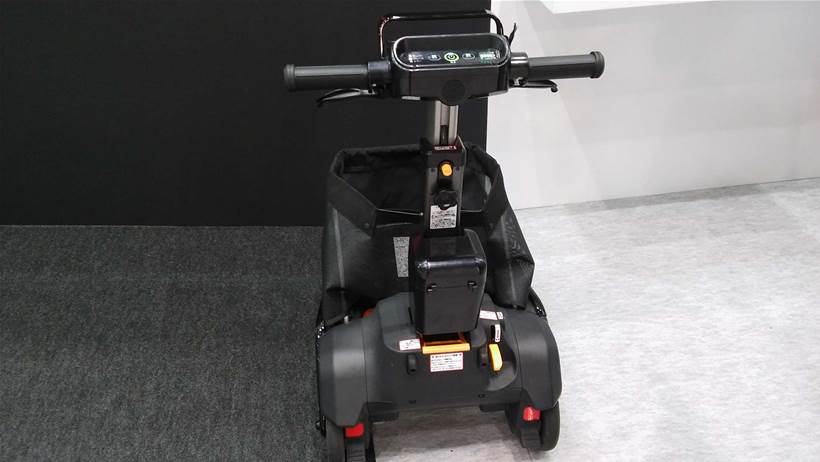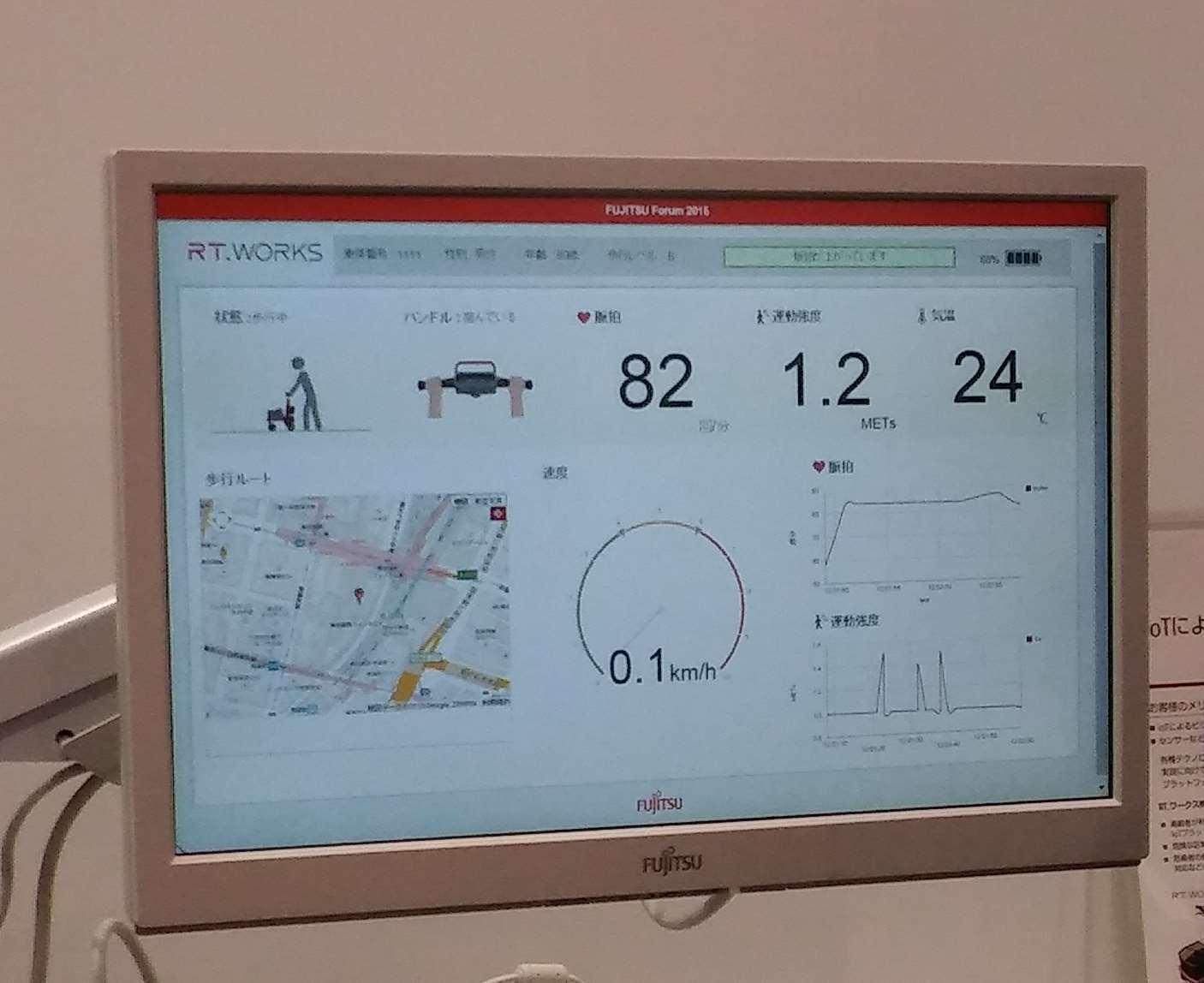In Japan right now, there are a couple of hundred mostly elderly people using a mobility aid that looks like a small cart fitted with bicycle handles.
However, this is no ordinary mobility aid - rather it's a state-of-the-art machine built by Japanese firm RT Works, using technology developed under a co-creation arrangement with Fujitsu.
The aid is fitted with an array of sensors, which feed data into a Fujitsu cloud, where it is surfaced through a dashboard-style application.
The idea is that the family of an elderly person - and the company providing the mobility aid technology, will be able to watch the movement of elderly people as well as their health conditions in real-time.
And while the real-world trial is in its early stages, it is hoped that the technology will eventually be able to provide predictive monitoring services.
For example, if the sensors track an uphill movement of the person and a sudden - abnormal - increase in heart rate, the system could alert that person or their family to the threat of a heart attack.
"At this moment it's a trial project so we don't have that service yet," a Fujitsu spokesperson said during a demonstration of the technology at the Fujitsu Forum 2015 in Tokyo last week.
"But in a commercial phase that should be included in the services [offered]."
Fujitsu showed off a trial version of the dashboard which can be used in conjunction with the robotic mobility aid.
In a product demonstration, the system was able to graphically recognise the incline on which the aid was being pushed, as well as the speed and location of the aid.
Using sensors similar to those found in smart watches, the aid is also capable of tracking vital signs such as pulse and body temperature.
The idea of using robotics in aged care is not new in Japan, with a large proportion of research devoted to the area.
Other recently notable projects include the Robear, a cute polar bear-like robot that can lift and support frail patients, and robotic beds and motorised leg braces that can be used by stroke victims to aid their recovery.
Stepping towards IoT
Fujitsu sees the RT Works mobility aid as an example of what might be accomplished in the not-too-distant future under the broad technology umbrella that is the Internet of Things.
One of the overarching themes of this year's Forum event was how the Internet of Things fitted into Fujitsu's human-centric innovation strategy, which is broadly about creating technology that benefits society.
"Fujitsu is trying to get one step ahead in the Internet of Things," corporate executive officer Shingo Kagawa said.
"We don't want to connect just things - when it comes to the Internet of Things, things and people will be connected to a network."
Kagawa believed the Internet of Things - when realised - would redefine how we viewed everyday objects.
"The definition of an automobile will change," he predicted.
"It will no longer just be a mode of transport. It will be more like a concierge service for you. For example, information from the driver's seat and steering wheel will tell you your health status."
However, such cars are likely to be a little way off. Cognisant of that, Fujitsu's plans for the Internet of Things are to start smaller.
"IoT can be started at a small scale and operated simply," Kagawa said.
"That's what we're striving for."
Ry Crozier travelled to Fujitsu Forum 2015 in Tokyo as a guest of Fujitsu.











